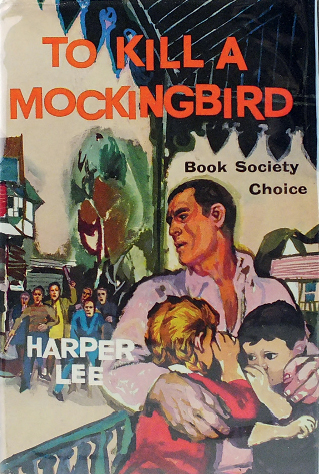The dust jacket of the first edition, published by Lippincott, included a quote from Truman Capote: ‘Someone rare has written this very fine first novel.’
The amazing success of her mesmerising first novel, about race and justice in a small Alabama town in the 1930s, propelled an unknown author to international fame and helped to inspire the civil rights movement and public defenders.
Harper Lee (1926–2016) grew up in tiny Monroeville, Alabama, close to her childhood friend, Truman Persons, aka Truman Capote (1924–84), and they both aspired to become full-time writers. When Capote travelled to Kansas to conduct the research for the article and book that would become In Cold Blood, the first ‘non-fiction novel’, she went along for support and as cover to muddle his image as a flaming gay eccentric. He already was an established author and a master of self-promotion.
In Cold Blood (1966) enjoyed remarkable success and brought him increased celebrity. Yet Lee’s even greater success – a Pulitzer Prize and more copies sold – made him envious and deepened her tendency to both shun publicity and lack the will to publish more fiction. ‘I was his oldest friend,’ she later confided in a letter to a friend, ‘and I did something Truman could not forgive: I wrote a novel that sold. He nursed his envy for more than twenty years.’
Lee had laboured for years on her first novel, living off the charity of friends and shovelling revisions to her editor at J.B. Lippincott, and the book’s prospects to become a best-seller didn’t seem very good. But To Kill a Mockingbird became a huge favourite with readers, required reading in schools and was later made into a blockbuster movie starring Gregory Peck.
Basing her book on characters and events in her old hometown, Lee told a story in the voice of a precocious six-year-old girl, Jean Louise Finch (Scout), who lives with her brother, Jem, and her widowed father, Atticus Finch, who is a lawyer in the small town. The story takes place from 1933 to 1935 and probes disturbing issues of race and justice in the Deep South, revolving around a case of alleged interracial rape that Atticus is called upon to defend.
Appearing at the dawn of the modern civil rights era in America, just as a rising generation of young people were starting to come of age, Lee’s timing and treatment of a vexing and important social issue could not have been better. Its core theme of innocence resonated with readers and viewers. Many youths were inspired to enter the legal profession to be like Atticus Finch, or to become a writer like Harper Lee. The book has gone on to sell more than thirty million copies, and the motion picture remains a classic. It has also been one of the most controversial, due to its treatment of race and rape and its use of profanity, in the tradition of Huckleberry Finn.
In 2015, as Lee neared the end of her life, she published a second novel, Go Set a Watchman, which shocked readers by turning the iconic character of Atticus Finch, the great paragon of liberal values, into a bigot. In fact, it was her first novel, which had gone unpublished before To Kill a Mockingbird. The work, which some consider to be a first draft of Mockingbird, received mixed reviews.
The dust jacket of the first edition, published by Lippincott, included a quote from Truman Capote: ‘Someone rare has written this very fine first novel.’

The first UK edition was printed by the Book Society – a monthly book club, which gave ‘Choice’ status to those books it felt were destined to become best-sellers.